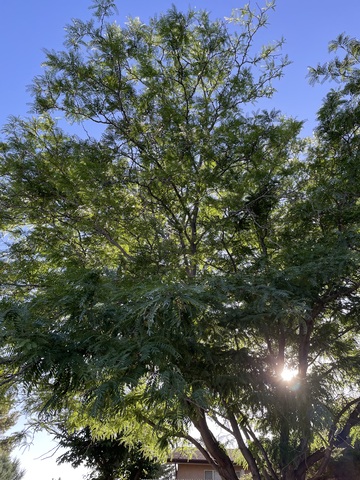
When I walk my dog through the neighborhood, I sometimes stop to take a picture of a tree that catches my eye. Though my dog loves to walk, she patiently waits while I get just the right angle. Then we're on our way again.
Keeping my eye pealed for a tree that I want to photograph helps me to stay focused on the moment instead of thinking of what needs to be done at home. I find myself intrigued by birds flying through the air, a lizard skittering behind a clump of grass, my dog sniffing at whatever delectable scent her nose discovers.
In more quiet moments at home, I look at the tree pictures I've captured on my iPhone. They remind me that each image is a little bit like the moments that make up our lives. Each second contains a physical and emotional memory. What happened in that instant can be pleasant or can store varying degrees of pain.
I sometimes experiment with looking at each of those tree pictures and deliberately giving myself permission to let go of any unpleasant physical or emotional memories that might come up as I look at them. There are usually no unpleasant events around the taking of the picture. But, in its own mysterious way, my mind can be triggered by the photos. Suddenly, I am remembering something totally different that still holds pain for me.
If I allow my mind to find its own pathway to that pain, it presents a chance to heal from sadness, anger, confusion, indignation, fear or other emotions. The letting go process involves the willingness to dwell for a short time on the painful emotion.
That's the hard part. If I am willing to sit with that emotion, the feeling soon begins to soften until it releases or become so mild that it no longer triggers discomfort. The key is to be willing to sit with the pain until it lessens. It usually doesn't take more than a few minutes. If you sense that your painful memories are too great to handle alone, try this experiment with a counselor or a trusted friend.
Initially, I thought that walking my dog was something I did to help her explore the neighborhood, stretch her legs, and give me some physical activity. I didn't think about the emotional healing that can come when I look at pictures of trees I've taken on those walks.
I don't always take pictures of trees when I walk my dog. Sometimes I just enjoy every moment for the peacefulness it holds. And that's okay too. It helps to create pleasant memories, and I can never have too many of those.



